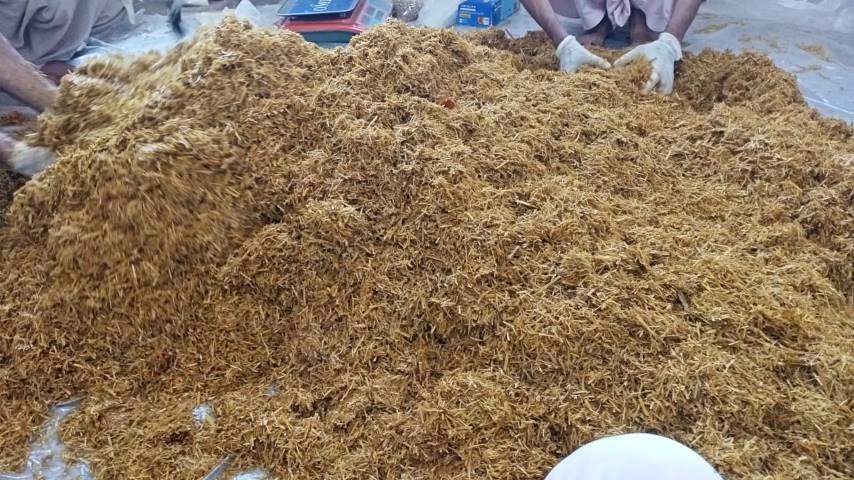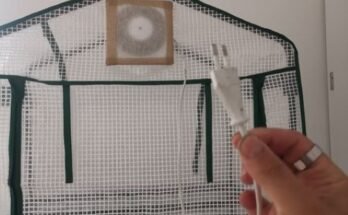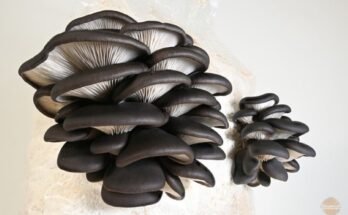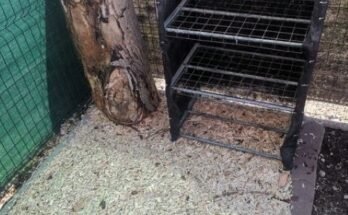Oyster mushrooms, a fungus closely related to the common Portobello mushroom, grow in various climates and conditions. They are one of the easiest types of mushrooms to grow at home or for commercial purposes. This is because of their fast fruiting time and wide range in which they can be grown.
However, oyster mushroom fruiting conditions vary depending on where you live and your climate during certain times throughout the year. Oyster mushrooms will fruit when the temperature is between 50-60°F/10-15°C, and the humidity levels are around 80%. Here are oyster fruiting conditions that you need to know;
Location
The first thing to consider when growing oyster mushrooms is your location. What kind of weather are you dealing with? Is it typically cold or warm? These questions are important because living in a tropical area will provide you with different conditions than living in the Northern Hemisphere during the winter months.
Oyster mushroom fruiting conditions are different depending on where you live. For example, if you live in California, chances are your mushrooms will be fruiting year-round due to the warm climate. However, if you live in cold states, expect your oyster mushroom production cycle to be different.
Wintertime typically is not a good time to grow oyster mushrooms if you live in a cold state because there is little to no mushroom production during this time. Oyster mushrooms typically only fruit in the fall and summer months and do not produce any mushrooms when cold and dark outside. However, even in colder states, many gardeners have grown oyster mushrooms during the wintertime due to a growing trend of indoor mushroom farms.
The benefit of these growing environments is that they provide ideal conditions for oyster mushrooms due to their consistent temperatures and light exposure. In short, you can produce as many oyster mushrooms as you want year-round.
Light Sources and Fan Requirements
Oyster mushrooms need sunlight to grow, and this has proved to help them gain vitamin D, just like human beings. They are basidiomycetes, producing their spores on large fleshy surfaces that get exposed to the sun. Your fruiting bodies will not grow if they are in darkness or deep shade for too long.

If you live in a further north place or have shorter days, you will need to artificially provide your oysters with more light by using regular fluorescent lighting at the top of your growing vessel.
As aforementioned, sunlight is essential for oyster mushroom growth. Apart from sunlight, there are two other ways you can provide your oysters with adequate lighting: using a high-intensity discharge (HID) lamp or purchasing something that oyster mushroom spores have fully colonized.
If you choose to use an HID lamp, the ideal distance should be at least 40 inches or 1 meter away from your growing containers. HIDs are much more powerful than fluorescent lights, so keep this in mind when placing them. Allow enough room to spread out and grow because these mushrooms will also require ventilation to dry out.
Once you have your substrate, light source, and fan set up, you can start growing oyster mushrooms. Make sure the area is well ventilated so moisture does not build up in one place, or else you could get something called mold rot which is a type of bacterial growth that requires less humidity to grow.
Temperature Range
Oyster mushroom fruiting conditions also vary depending on the temperature of your environment. In general, they will grow faster in warmer climates. Some of the most successful growers maintain their mushrooms at an average temperature of 70-75 degrees Fahrenheit, but this number can vary depending on who you ask or where someone lives. According to some reports, ideal temperatures for oyster mushroom fruiting are between 60-68 degrees Fahrenheit.
However, when it comes down to it, temperatures above 75 degrees Fahrenheit may be too hot for oyster mushrooms to fruit properly. Suppose you live in a region where the temperature exceeds 80 degrees on a typical day during the summertime. In that case, we recommend dropping your fruiting chamber temperature down to around 70 or 65 degrees. This will still keep the environment warm enough for your oyster mushrooms to grow and prevent them from overheating.
Temperature fluctuations throughout the day may also affect your oyster mushrooms’ fruiting process. Decreasing your temperature by 5-10 degrees overnight has been known to produce more potent oysters throughout the fruiting cycle. It is best to have a constant medium temperature for the duration of the 3-4 day fruiting cycle to ensure you get a good yield from your mushrooms.
Sadly, those living in colder areas, such as those from Canada and other parts of the Northern Hemisphere, need to wait for the season. You will not be able to produce any oyster mushrooms during the winter because of their temperature sensitivity.
When growing in a colder climate, you can still grow oyster mushrooms using straw or sawdust substrate. This substrate is pre-treated with mushroom spores and pasteurized before being shipped out to customers. If you are lucky, live in a warm enough area, or can set up an indoor farm, there is potential to produce oyster mushrooms all year round.
Soil Type
Different types of soils have unique properties. For example, some hold water more than others. Oyster mushrooms tend to do well in soils that have relatively good drainage.
Straw is a typical substrate among Oyster mushroom cultivators because of its efficiency. Typically, it contains most of the essential needs that Oyster mushrooms require. Pasteurization is also necessary, and you can do it using hot or cold water. For hot water, keep the temperatures between 65-80C for about one to two hours. But if you decide to use cold water, make sure it is a high-pH lime bath for between 12-18 hours.

Alternatively, although rarely used, using a mix of peat moss and sterilized organic brown rice flour works well when growing oyster mushrooms. Peat moss works as a growing medium, and organic brown rice flour provides them with the amino acids they need to grow.
Once you have your substrate, put it into a large tub or barrel. You can choose a barrel with a lid for easy access or something with a hole drilled in its side. The hole should be big enough to fit your light source through.
Place your growing container in an area that has direct access to sunlight. This is where the mushrooms will grow since they are basidiomycetes, meaning their spores rely on exposure to sunlight for reproduction. Allow enough room so you can efficiently work around the container without knocking over any of the developing mushroom stalks.
Water and Humidity Requirements
Like all fungi, oyster mushrooms need moisture to grow. However, if you let them sit in too much water, the stalks will become slimy and soggy. They also need some airflow around them so they can dry out between watering sessions. Make sure your growing area is well ventilated to help maintain the humidity.
Use a small garden or hand-held sprayer to mist the mushrooms with purified water lightly to water them. You can also pour boiled or sterilized rainwater onto them if you don’t want to purchase bottled drinking water for this purpose. Be sure the temperature of the rainwater is at room temperature or warmer before you pour it onto the mushrooms. As with all living organisms, oyster mushrooms do not tolerate cold water very well.
As far as amount is concerned, make sure to spray them lightly with water at least once per day. If they sit in too much-standing water for too long, the moisture may affect the growing medium instead of the mushrooms.
Final Thoughts
Oyster mushrooms are delicious and unusual mushrooms that can be found all over the world. They grow on dead trees, stumps, or logs in different climates with varying fruiting conditions. You can also develop oyster mushrooms by purchasing them in a commercially colonized form known as spawn. Read here how to make Oyster Mushroom Spawn.
Remember that oyster mushrooms will only fruit in areas where they can get sufficient light exposure. Living in an area that is too shaded will prevent them from fruiting at all.





